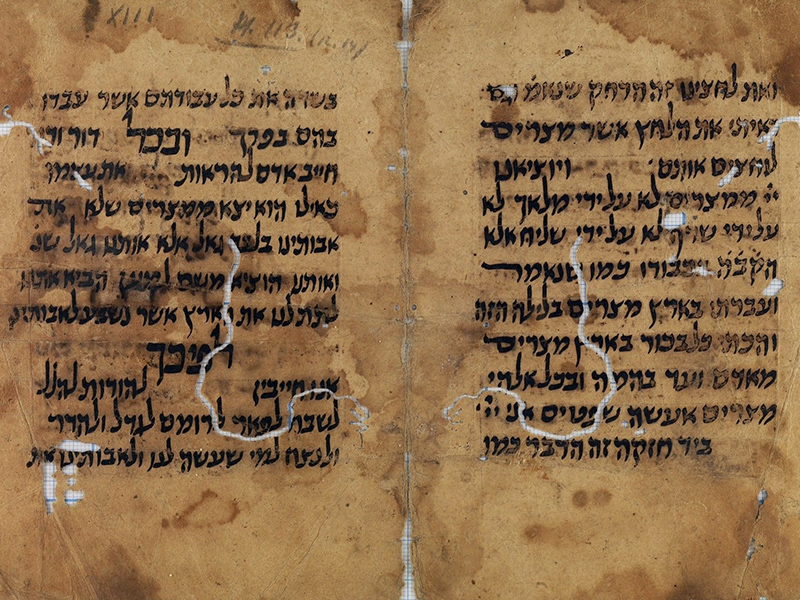JERUSALEM – Remnants of one of the oldest surviving Passover Haggadahs in the world, which was discovered in the trove of archived Jewish texts known as the Cairo Genizah, are currently on display as part of an exhibit at the National Library of Israel in Jerusalem.
The Haggadah, hand-scribed on parchment, dates from the 12th century CE.
Dr. Aviad Stollman, head of the collections at the National Library, said, “This Haggadah is particularly exciting for me since it’s 900 years old. Only a single page of it remains, on which can be made out four small columns [of text] of eight lines each, with four or five words in each line. What’s surprising is that even though 900 years have passed, the text is nearly identical to the text we read today.”
Offering some background about the Cairo Genizah, Stollman said, “In the women’s section of the ancient Ben Ezra Synagogue, there was a room that had an opening that couldn’t be reached without a ladder. The room functioned as a genizah [a storeroom for sacred texts that are no longer readable or usable but cannot be destroyed]. As early as the 8th century CE and until the genizah was discovered in the 19th century, they would throw worn-out holy texts in there.
“Today, we know that there were about 300,000 pages and partial pages there. Nearly all the fragments were handwritten in the past 1,000 years. Today, the [contents of the] genizah are divided among libraries throughout the world, including the National Library.”
